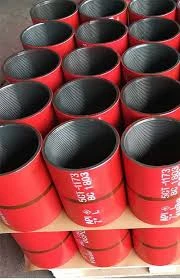- Afrikaans
- Albanian
- Amharic
- Arabic
- Armenian
- Azerbaijani
- Basque
- Belarusian
- Bengali
- Bosnian
- Bulgarian
- Catalan
- Cebuano
- Corsican
- Croatian
- Czech
- Danish
- Dutch
- English
- Esperanto
- Estonian
- Finnish
- French
- Frisian
- Galician
- Georgian
- German
- Greek
- Gujarati
- Haitian Creole
- hausa
- hawaiian
- Hebrew
- Hindi
- Miao
- Hungarian
- Icelandic
- igbo
- Indonesian
- irish
- Italian
- Japanese
- Javanese
- Kannada
- kazakh
- Khmer
- Rwandese
- Korean
- Kurdish
- Kyrgyz
- Lao
- Latin
- Latvian
- Lithuanian
- Luxembourgish
- Macedonian
- Malgashi
- Malay
- Malayalam
- Maltese
- Maori
- Marathi
- Mongolian
- Myanmar
- Nepali
- Norwegian
- Norwegian
- Occitan
- Pashto
- Persian
- Polish
- Portuguese
- Punjabi
- Romanian
- Russian
- Samoan
- Scottish Gaelic
- Serbian
- Sesotho
- Shona
- Sindhi
- Sinhala
- Slovak
- Slovenian
- Somali
- Spanish
- Sundanese
- Swahili
- Swedish
- Tagalog
- Tajik
- Tamil
- Tatar
- Telugu
- Thai
- Turkish
- Turkmen
- Ukrainian
- Urdu
- Uighur
- Uzbek
- Vietnamese
- Welsh
- Bantu
- Yiddish
- Yoruba
- Zulu
vacuum hose coupling
Understanding Vacuum Hose Couplings A Key Component in Automotive and Industrial Applications
Vacuum hose couplings are essential components in various applications, especially in the automotive and industrial sectors. They play a critical role in ensuring the proper functioning of vacuum systems, often used for transferring fluids, preventing air leaks, and creating efficient airflow systems in engines and machinery. This article aims to delve into the functions, types, and advantages of vacuum hose couplings.
What Are Vacuum Hose Couplings?
Vacuum hose couplings are connectors used to join two vacuum hoses or tubes. They create a secure connection that can withstand negative pressure. These couplings are typically made of durable materials such as rubber, silicone, or plastic, designed to resist wear and maintain performance under various temperature ranges and chemical exposures. They are crucial in systems where maintaining a vacuum is necessary, such as in brake boosters, air conditioning systems, and industrial machinery.
Types of Vacuum Hose Couplings
1. Standard Couplings These are the most common type, used for basic connections in various applications. They generally come in a variety of sizes to accommodate different hose diameters.
2. Quick Connect Couplings These couplings are designed for ease of use, allowing for fast and simple connections and disconnections. They are especially useful in applications where downtime needs to be minimized.
3. Swivel Couplings These couplings allow for rotational movement without compromising the connection. This characteristic is beneficial in machinery where hoses may need to twist or move without kinking or stressing the connection.
4. Barbed Couplings Featuring raised ridges or barbs, these couplings help create a tight seal when inserted into a hose, preventing any leakage. They are commonly used in both automotive and industrial applications.
vacuum hose coupling

5. Threaded Couplings These provide a secure fit by screwing together two components. They are often used in high-pressure applications where a reliable connection is paramount.
Advantages of Vacuum Hose Couplings
1. Enhanced Safety Properly used vacuum hose couplings help mitigate the risk of leaks, which can lead to hazardous conditions. This is particularly important in automotive applications, where air quality and brake performance are critical.
2. Improved Efficiency By ensuring a tight seal, vacuum couplings help maintain optimal performance in systems like engines and HVAC units. A secure connection reduces air loss, leading to better efficiency and fuel economy.
3. Versatility Vacuum hose couplings are available in various sizes and materials, making them suitable for numerous applications across different industries. Their adaptability means they can be utilized in diverse environments, including automotive, HVAC, and pharmaceutical industries.
4. Ease of Use Many vacuum hose couplings are designed for quick installation and removal. This feature allows technicians to perform maintenance and repairs with minimal interruption, saving time and resources.
5. Durability Made from high-quality materials, vacuum hose couplings are built to withstand harsh conditions, including extreme temperatures and exposure to chemicals. This durability ensures longevity and reliability in critical applications.
Conclusion
Vacuum hose couplings are more than just connectors; they are vital components that contribute to the safety, efficiency, and reliability of vacuum systems in various applications. Understanding the different types of couplings and their advantages can help professionals in automotive, industrial, and other fields make informed decisions regarding their use. As technology advances, the continual development of vacuum hose couplings will further enhance their performance, ensuring that they meet the growing demands of modern applications. Whether you are a DIY enthusiast or a professional mechanic, recognizing the importance of vacuum hose couplings can help ensure that your systems operate smoothly and efficiently.
-
Tubing Pup Joints: Essential Components for Oil and Gas OperationsNewsJul.10,2025
-
Pup Joints: Essential Components for Reliable Drilling OperationsNewsJul.10,2025
-
Pipe Couplings: Connecting Your World EfficientlyNewsJul.10,2025
-
Mastering Oilfield Operations with Quality Tubing and CasingNewsJul.10,2025
-
High-Quality Casing Couplings for Every NeedNewsJul.10,2025
-
Boost Your Drilling Efficiency with Premium Crossover Tools & Seating NipplesNewsJul.10,2025







